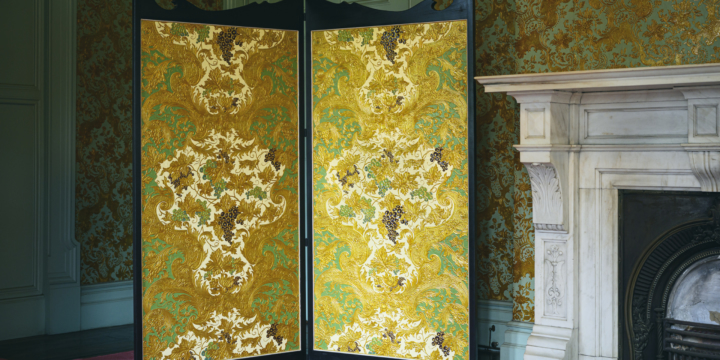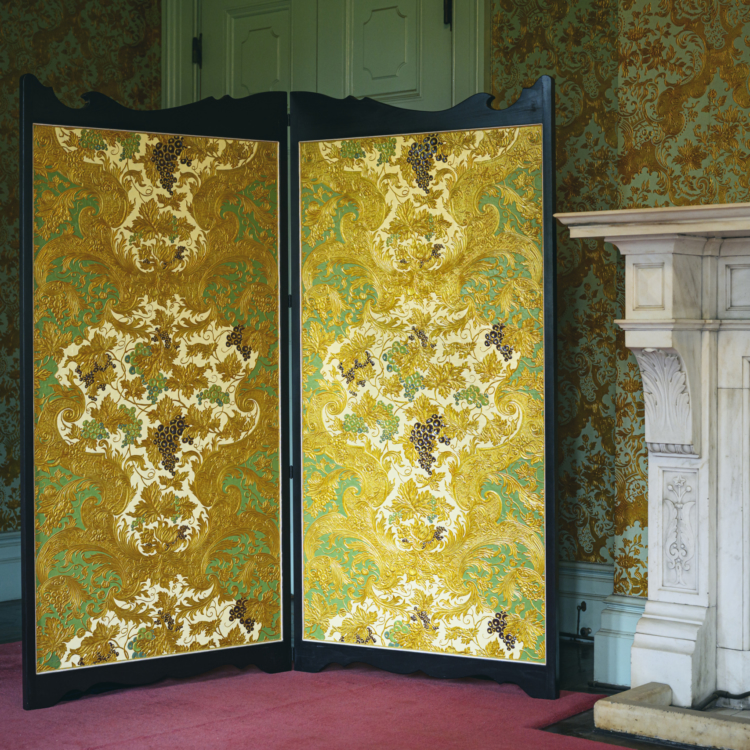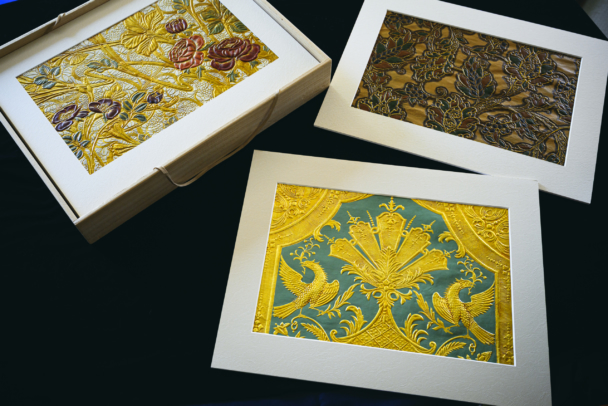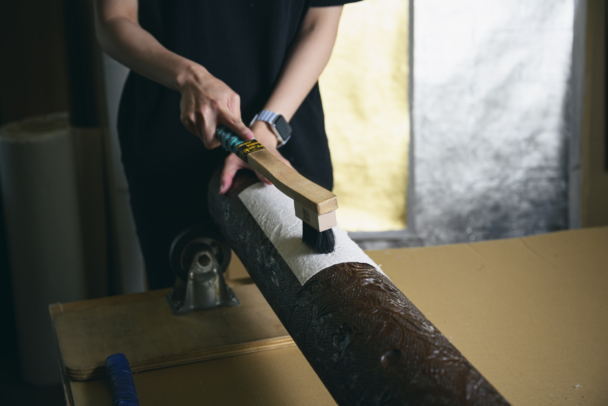

The Splendor of Kinkarakami Revived for the Modern Age
In the Meiji era, the West was captivated by the ornamental opulence of kinkarakawashi, a type of lavishly decorative wallpaper that uses Japanese washi paper to replicate the richly colored and embossed leather known as gilded leather. Kinkarakami Institute was founded in 1985 by Takashi Ueda, who was deeply concerned that the traditional techniques of this art form had been lost.
In 1983, the restoration of the Former Otaru Branch of Nippon Yusen shipping company, a designated Important Cultural Property, became the turning point for Ueda. Relying on the few surviving documents and samples, he undertook extensive research into the materials, tools, and techniques once used. After much trial and error, he succeeded in reviving the craft, enhanced with his own innovations, and gave it new life as under the name kinkarakami.
In 2005, Ueda was officially designated a Bearer of Techniques Selected for Preservation by the Japanese government. He continued to produce traditional kinkarakami patterns throughout his life, contributing significantly to the restoration of numerous Important Cultural Properties across Japan. His most renowned achievement was the large-scale restoration of the Kyu-Iwasaki-tei Gardens in Yushima, Tokyo, originally designed by Josiah Conder, which remains a testament to Ueda’s legacy.
At the same time, Ueda worked to bring kinkarakami into contemporary living spaces, crafting works that harmonize with modern interiors. A prime example is Den’en fukei (shiki) (Rural Landscape: Four Seasons), a framed artwork that combines delicate gold leaf with vivid colors. Originally created as ceiling wallpaper for the VIP room at Tokyo Metropolitan Theatre, Ueda later reimagined same kinkarakami motif with new coloring as a piece of art that could be enjoyed in everyday settings, expanding the expressive potential of kinkarakami.
After Ueda’s passing, his exceptional technique and deep dedication to the craft were carried on by his granddaughter, Mai Ebata, who had worked alongside him in his later restoration projects.
“The vibrant colors, rich texture, and shimmer of kinkarakami become truly complete when integrated with the space and furnishings around them. Alongside restoration work, I want to explore the possibilities of kinkarakami as a brand—applying washi’s natural properties to create interiors and develop new products,” she says determinedly.



